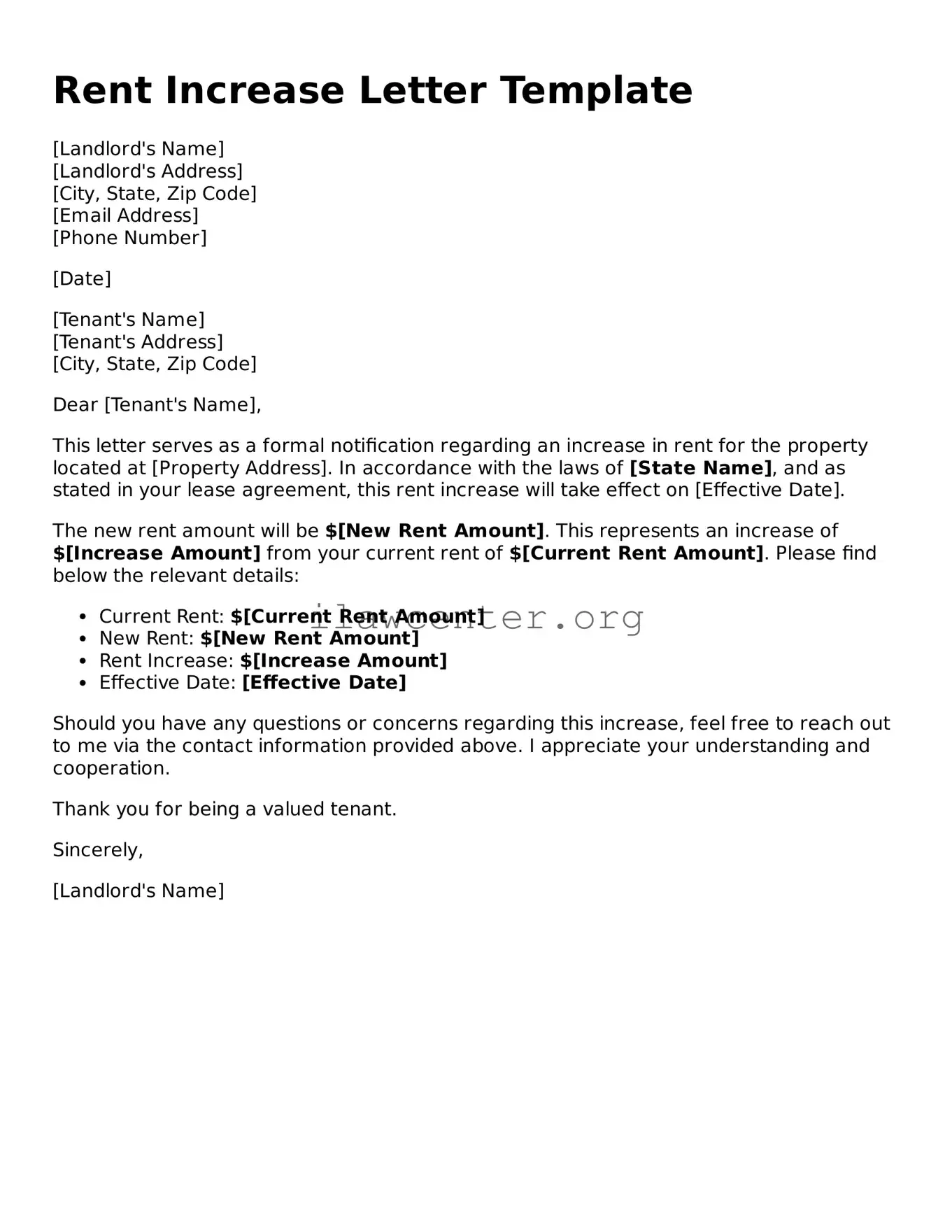Instructions on Utilizing Rent Increase Letter
Once you've reviewed the Rent Increase Letter form, the next step involves carefully completing each section to ensure all pertinent information is accurately conveyed. By following the steps outlined below, tenants will be informed of the changes in rental terms in a clear and organized manner.
- Begin by entering the date at the top of the form. This should reflect the day you are filling out the letter.
- Fill in your name as the landlord or property manager. Make sure to print it clearly.
- Add your full address underneath your name, ensuring it is accurate for any communication purposes.
- Next, insert the tenant’s name. This helps in personalizing the letter and ensuring it reaches the correct individual.
- Write the tenant's address following the same format you used for your own address.
- Clearly state the new rent amount you are proposing. Be specific to avoid any confusion.
- Indicate the effective date of the rent increase. This lets the tenant know when the new rent will take effect.
- If applicable, provide a brief explanation or reason for the increase. Although this is not mandatory, it can help in maintaining a positive landlord-tenant relationship.
- Conclude the letter with your signature. By signing, you affirm the information provided is accurate and binding.
- Finally, make a copy of the completed letter for your records before delivering it to the tenant.
